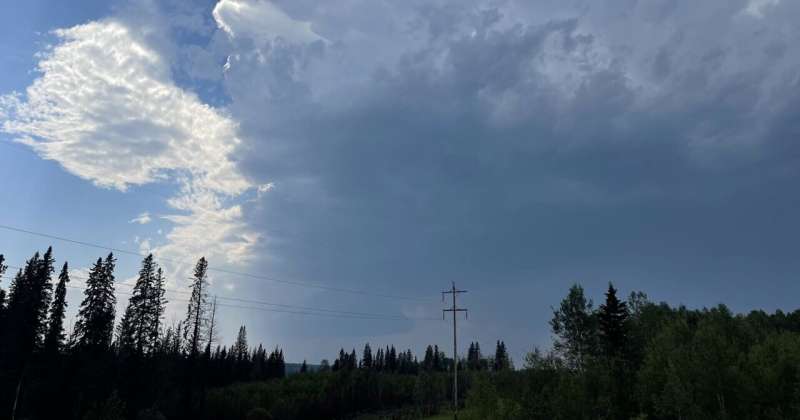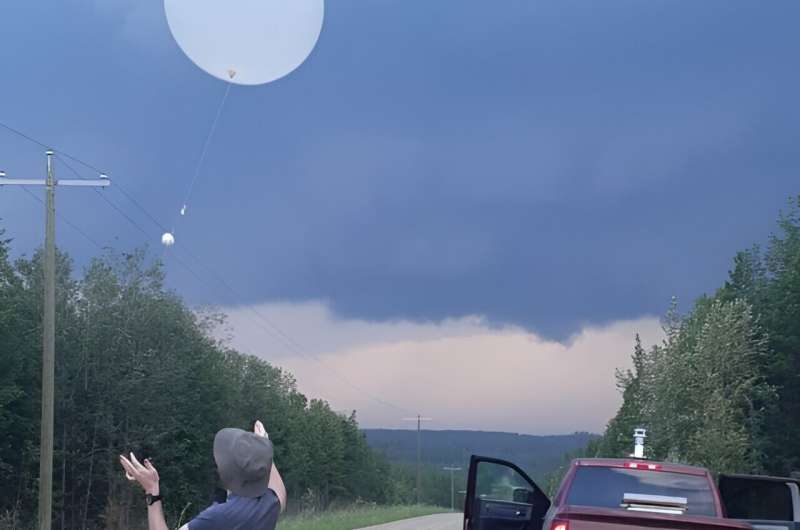
In the blockbuster 1996 movie Twister, meteorologists successfully deployed small weather sensors into the heart of an active tornado to collect data and revolutionize severe weather safety.
Previously the stuff of legend, a researcher from Australia’s Bureau of Meteorology teamed up with University of Western Ontario’s Northern Hail Project (NHP) this summer to turn science fiction into fact as they unleashed similar sensors, known as hailsondes, into an Alberta hailstorm for the first-time ever.
The 24g hailstone-shaped probes were attached to balloons and released inside storm updrafts. Once released, they behaved like hailstones, capturing measurements of the pathways hail took and the conditions in which hailstones grew as they moved through a storm. The probes also measured significant ice growth and traveled in a half-circle around the storm’s rotation, also known as the “mesocyclone.”
“It started as a weekend project to see if the technology was there to build such a device,” said Joshua Soderholm, an Australian thunderstorm scientist and long-time collaborator of NHP executive director Julian Brimelow. “There was a significant amount of engineering to ensure it could also survive the extreme conditions inside storms.”
Soderholm designed the technology in 2021 with Matthew Kumjian from Pennsylvania State University; Jordan Brook, Ph.D. student at the University of Queensland, and Anders Petersson from the Swedish atmospheric measurement solutions company Sparv Embedded.
Brimelow invited Soderholm to participate in the ongoing 2023 NHP field study in Alberta to conduct research and train student interns in the new technology.
“Collecting data from the eye of the storm is the white whale of meteorological research,” said Brimelow. “This unique dataset will improve our capacity to simulate models of hailstorm events and provides direct validation of what hailstones experience during a storm.”

Several hailsonde sensors recently finished the final stages of testing and development.
On days with severe hailstorms, Soderholm deployed the hailsonde system alongside NHP equipment to measure the conditions in which hailstones grow.
“This is not as simple as it sounds and requires being at the right location at the right time with the right type of hailstorm,” said Soderholm.
After several days without any luck, the team intercepted a supercell (severe storm with rotating updraft) producing giant hail east of Edmonton on July 24 around 4:30p.m. and successfully launched two hailsondes into the storm.
The hailsondes were captured by the supercell and then detached from their balloons, continuing their ascent just like real hailstones, lofted more than seven kilometers high by winds exceeding 120 km/h.
With the new-found success of the hailsondes, plans are now underway to use larger numbers and devise a method to retrieve the devices once they’ve fallen to the ground to study the ice collected.
This game-changing technology was a finalist for the 2022 Harry Otten Prize for Innovation in Meteorology. The international award is presented every second year by the European Meteorological Society (EMS) for hardware or software innovation that can be readily applied and bring benefits quickly.
Citation:
Movie-inspired technology successfully collects hail data from eye of the storm (2023, August 10)
retrieved 12 August 2023
from https://phys.org/news/2023-08-movie-inspired-technology-successfully-hail-eye.html
This document is subject to copyright. Apart from any fair dealing for the purpose of private study or research, no
part may be reproduced without the written permission. The content is provided for information purposes only.


